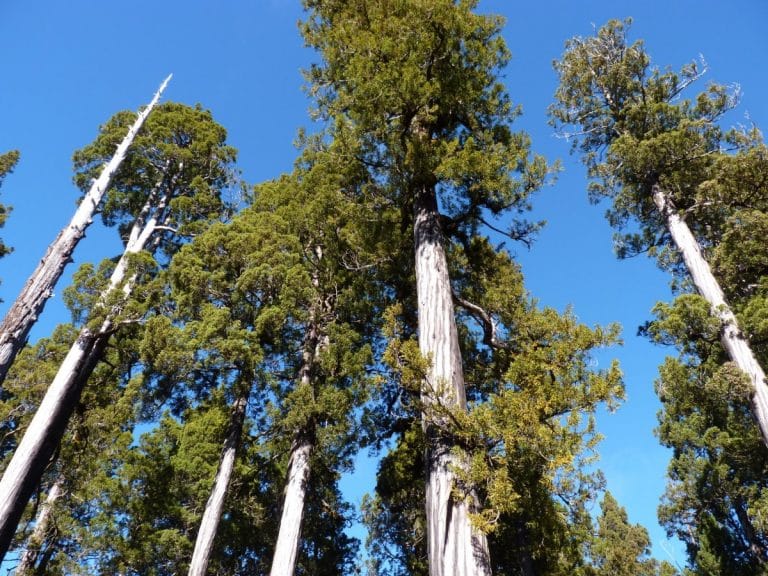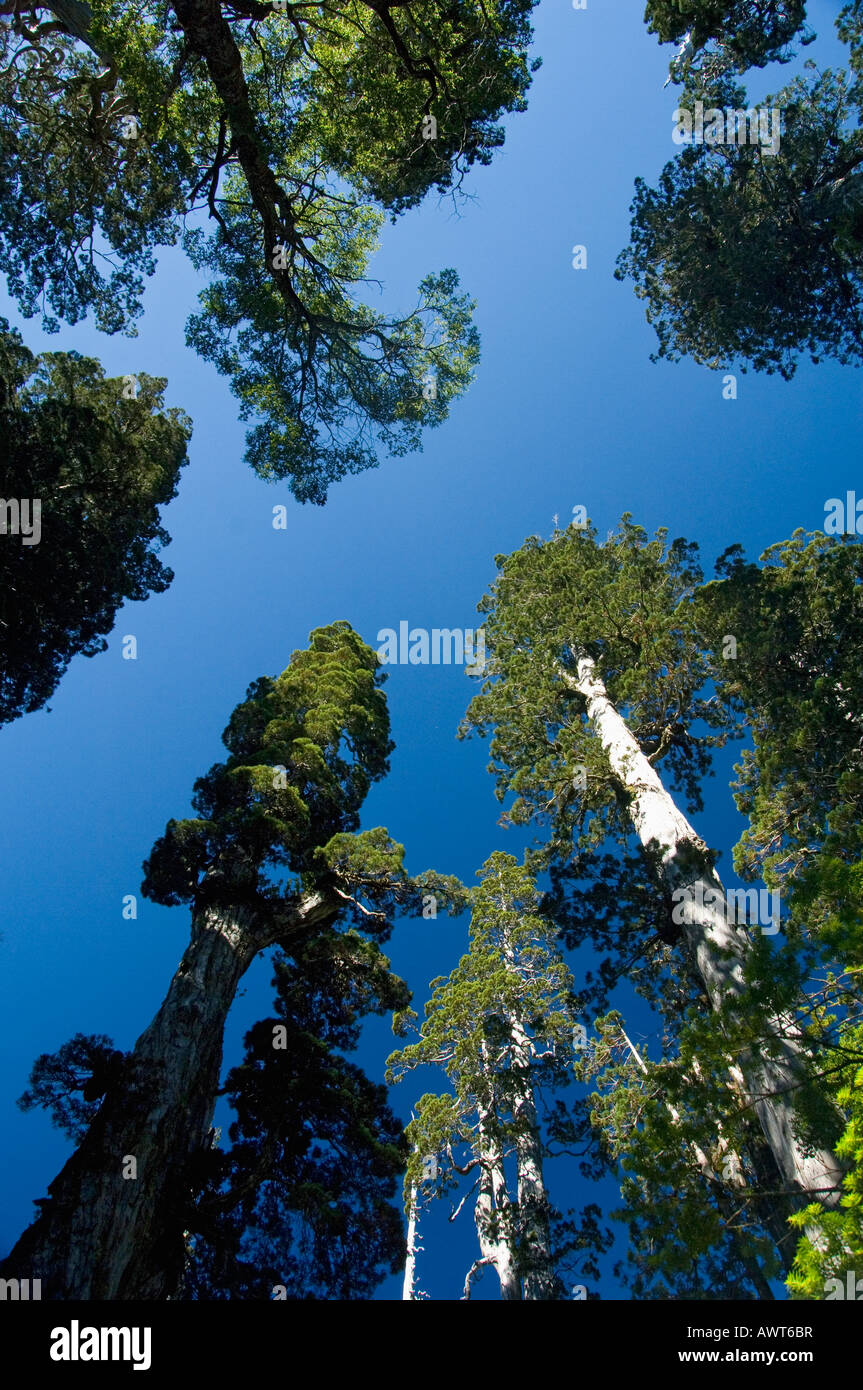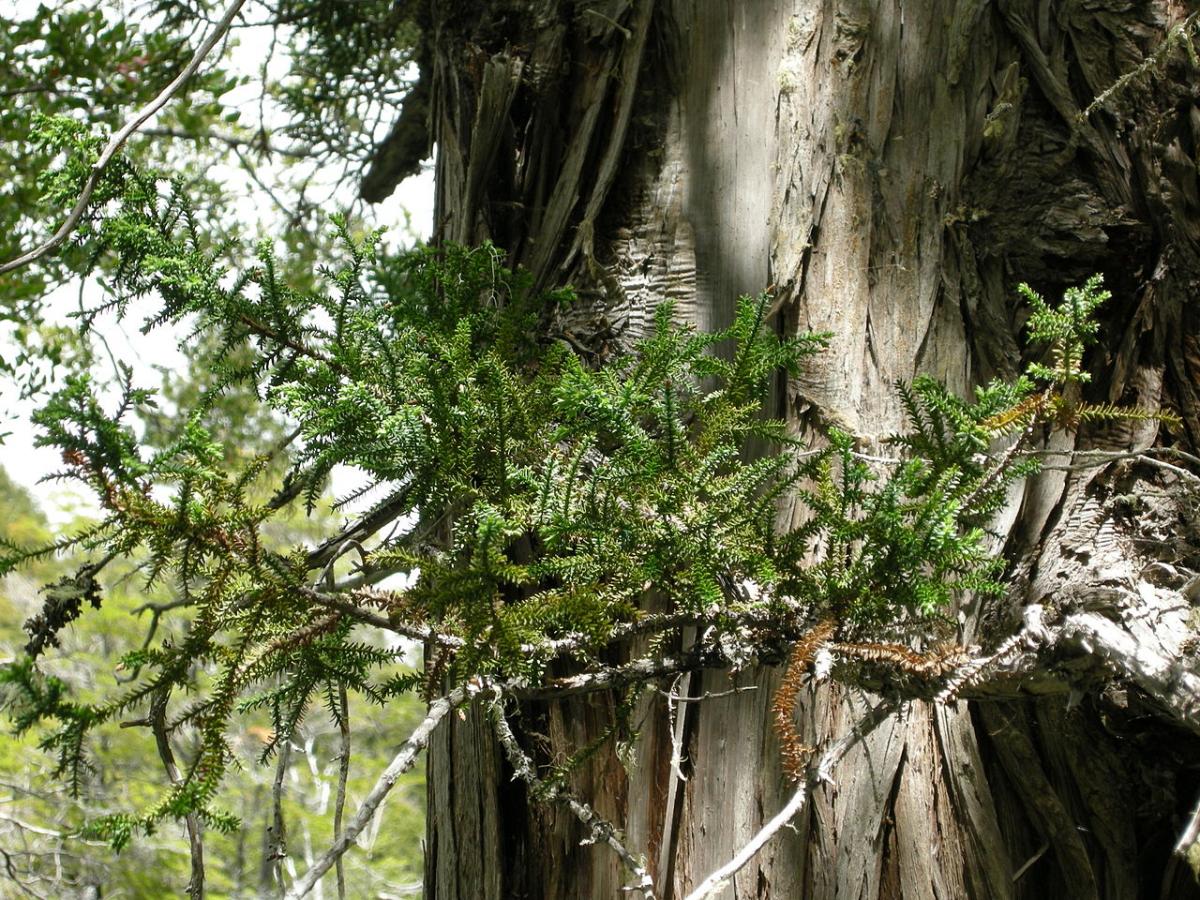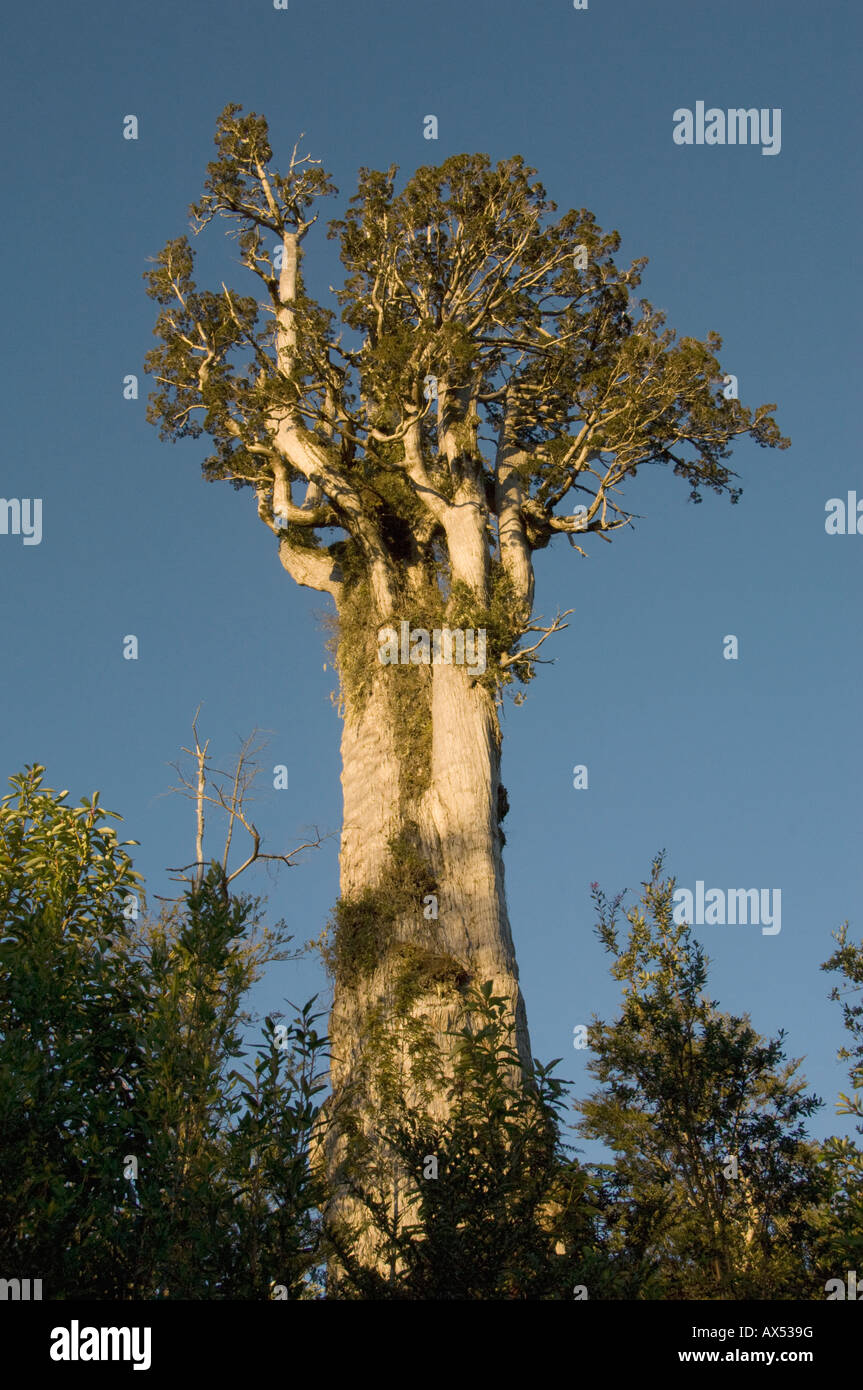
Fitzroya cupressoides todo sobre el segundo árbol más longevo del
Image of Fitzroya cupressoides. X Region, Alerce Costero, Chile Altitude: 700-900 m. 03 20, 2007 . GROWING TIPS . This species has the following hardiness: USDA Hardiness Zone 7, even 6b. The plant tolerates low temperatures (-15° C even -20° C), it can be covered by snow for months (1 - 8 months).

Fitzroya cupressoides (Alerce/Patagonian Cypress) Royal Bo… Flickr
Introduction. Fitzroya cupressoides (alerce) is one of the most outstanding species of the temperate rainforests of southern Chile and adjacent Argentina, due to its beauty, cultural, historical and scientific importance.Fitzroya is an endemic evergreen conifer that can live for more than 3600 years (Lara and Villalba, 1993) and is thus the second longest-lived tree species in the world after.

Alerce (Fitzroya cupressoides) GARUGA
Description. Fitzroya: Evergreen, dioecious tree. Branches not whorled, shoots angular, leaves scale-like, in whorls of 3. Female flowers in cone-like inflorescences, composed of 9 scales in whorls of 3, in 3 alternating whorls; the lowest whorl small and sterile; the middle whorl larger and sterile or with a single 2-winged seed to each scale.

Detalle de las hojas de Alerce, Fitzroya cupressoides Flickr
The trunk of the alerce (Fitzroya cupressoides), also called a Patagonian cypress, is over 13 feet (4.3 meters) — so big that researchers could get only a partial core. On that core, they.

Alerce trees (Fitzroya cupressoides) WILD, Alerce Alpino National Park
alerce, (species Fitzroya cupressoides ), coniferous tree that is the only species of the genus Fitzroya, of the cypress family (Cupressaceae), native to southern Chile and southern Argentina. In the wild it grows to become one of the oldest and largest trees in the world.

Alerce (Fitzroya cupressoides) P.N Alerce Costero Flickr
Common names include alerce ("larch" in Spanish), lahuán (Spanish, from the Mapuche Native American name lawal ), and Patagonian cypress. The genus was named in ho More Info Computer Vision Model Included The current Computer Vision Model knows about this taxon, so it might be included in automated suggestions with the "Visually Similar" label.

Fitzroya cupressoides (alerce or Patagonian cypress) Alerce
ALERCE COSTERO NATIONAL PARK IN CHILE— Some 5400 years ago, about the time humans were inventing writing, an alerce tree ( Fitzroya cupressoides) may have started to grow here in the coastal mountains of present-day Chile.
Patagonia Alerce patagónico (Fitzroya cupressoides)
Alerce [Spanish] ( Dallimore et al. 1967 ); in its distribution area, Lahuan is the aboriginal name. Taxonomic notes The sole species in Fitzroya Lindl. (1851). Synonyms: Libocedrus cupressoides (Molina) Kuntze (1898); Abies cupressoides (Molina) Poir. in J.B.A.M.de Lamarck (1804); and Pinus cupressoides Molina (1782). Description

Fitzroya, also known as Alerce (Fitzroya cupressoides) tree growing
Alerce ( Fitzroya cupressoides) is a magnificent tree of the forests of southern Chile and Argentina. The huge trees are slow-growing and take many hundred years to reach their full height of 50 meters and up to 2 meters diameter. Trees of 70 m×4 m have even been recorded.

Fitzroya cupressoides todo sobre el segundo árbol más longevo del
Alerce, Fitzroya cupressoides, ≥3,613 years. Tourists visit an alerce in the Patagonian region of Argentina. This tree, dubbed "El Alerce Abuelo" (meaning "Grandfather Alerce") is 187.

Alerce Botanics Stories
A tree-ring width chronology of alerce trees (Fitzroya cupressoides) from southern Chile was used to produce an annually resolved 3622-year reconstruction of departures from mean summer temperatures (December to March) for southern South America.The longest interval with above-average temperatures was from 80 B.C. to A.D. 160. Long intervals with below-average temperatures were recorded from A.

Fitzroya cupressoides (alerce) description
Fitzroya cupressoides is the largest tree species in South America, normally growing to 40-60 m, but occasionally more than 70 m, and up to 5 m in trunk diameter. Its rough pyramidal canopy provides cover for the southern beech, laurel and myrtle. The largest known living specimen is Alerce Milenario in Alerce Costero National Park, Chile.

Alerce (Fitzroya cupressoides) trees. Mother nature, Evergreen, Plants
Known in Spanish as the alerce, Patagonian cypress (Fitzroya cupressoides) is a tree native to Chile and Argentina, belonging to the same family as giant redwoods. Barichivich took a sample of the Great-Grandfather in 2020, but could not get to its core with the drill he used.

Alerce tree (Fitzroya cupressoides) WILD, Alerce Alpino National Park
Alerce Lahuén Synonyms Fitzroya patagonica Lindl. Species Links Glossary References Degraded Fitzroya forest near Puerto Mont, Chile, where the loggers left only a few scattered old trees. Regeneration in such sites is typically poor, with Fitzroya being out-competed by vigorous understorey species, such as the Chusquea seen here.

Alerce Fitzroya cupressoides Alerce
About us Alerce ( Fitzroya cupressoides) is a tall, long-lived conifer native to southern Chile and Argentina. They are also known as lahuán ( lawal in mapudungún), or Patagonian cypress. They can live up to 4000 yr and reach up to 60 m of height. Credit: Nick Hall photography

Alerce (Fitzroya cupressoides) salvajes, Parque Nacional Alerce Andino
A Patagonian cypress known as Lañilawal or Alerce Milenario may be the oldest tree on Earth. One researcher estimates it sprouted more than 5,000 years ago, well before the Great Pyramid of Giza.